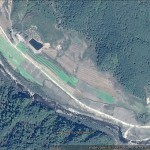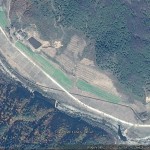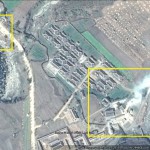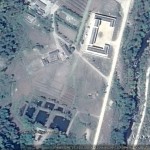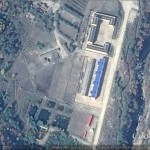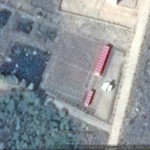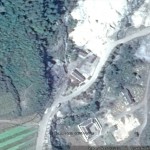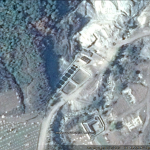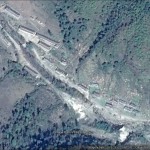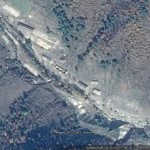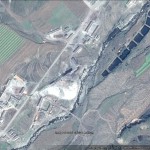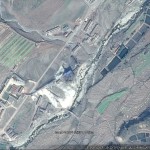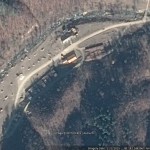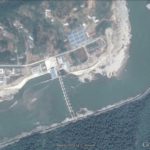By Benjamin Katzeff Silberstein
This summer and fall has seen a somewhat contradictory stream of information about the North Korean food situation. First there were the drought warnings, which were closely followed by regime sources claiming that harvests were actually getting better thanks to agricultural reforms. During the fall, however, the picture painted by multilateral institutions like the Food and Agriculture Organization (FAO) and the World Food Program (WFP) has been one of dire and continued problems.
In early October, the FAO said that North Korea’s staple food production could go down by 14 percent during the year compared to last year, as AFP reported:
North Korea’s staple food production could plummet by 14 percent this year because of bad weather, sparking fears of exacerbating chronic food shortages in the impoverished nation, according to the UN agricultural agency.
The gloomy forecast from the Food and Agriculture Organization comes as the reclusive communist country prepares for a lavish military parade Saturday to mark the 70th anniversary of the ruling Workers’ Party.
The North is expected to produce 3.7 million tonnes of rice and corn this year, down from 4.3 million tonnes last year, according to a report from the FAO early warning system.
Pyongyang plans to import 500,000 tonnes of rice and corn from abroad, the FAO said, but it will not be enough to feed its 25 million people.
The country, plagued by regular droughts, will face a total shortfall of 1.2 million tonnes of its staples.
State media reported in early June the country’s main rice-growing areas had been badly hit by the “worst drought in 100 years”.
North Korea saw significant rainfall later, but analysts said the prospects for this year were still grim.
Full story here:
North Korea food production could drop 14%: FAO
Yahoo News/AFP
10-9-2015
Later last month, the FAO reiterated its concerns over North Korea in its yearly report on the state of agriculture in the world. Voice of America:
More than 26 percent of children in North Korea’s countryside are underweight, a U.N. Food and Agriculture Organization report says.
The agency, in its recently released “State of Food and Agriculture 2015” report, also estimated that there are twice as many undernourished children in the communist country’s rural areas as in its cities.
Andre Croppenstedt, an FAO researcher who wrote the report, told VOA that “it’s normal to have a much higher percentage of children underweight in rural areas as opposed to urban areas,” but that the gap “is perhaps a little larger than usual” in North Korea.
The North Korean ratio is the 24th highest among the 123 low-income developing countries. Among East Asian countries, North Korea’s ratio ranked fifth, after East Timor, Cambodia, Papua New Guinea and Laos.
Read the full story here:
FAO: 1 in 4 Rural North Korean Children Underweight
Kim Hyunjin
Voice of America
10-22-2015
And last month, WFP announced it was extending its aid to North Korea over next year due to expected food shortages. Voice of America again:
The United Nations’ food agency plans to extend aid to North Korea amid reports that the communist country is facing food shortages next year.
Damian Kean, a regional spokesperson for the World Food Program (WFP), told VOA this week the agency plans to extend the current food aid program for another six months.
“This current program cycle is supposed to be finished this December. What we decided to do is to extend the program until the middle of next year,” said Kean.
He added that the agency needs an additional $23.3 million to fund the extension.
The WFP is conducting an assessment of the nutritional status of North Koreans to determine if further assistance is needed after June of next year, Kean said.
The agency launched a two-year food aid program in July 2013, and it had already extended the program through the end of this year.
According to Kean, the food shortages are affecting the most vulnerable groups, including young children and pregnant women. More than 30 percent of North Korean children under five are experiencing stunted growth because of malnutrition, and more than a third of pregnant women and breastfeeding women are suffering from anemia.
Full story here:
UN to extend aid to North Korea
Kim Hyunjin
Voice of America
11-03-2015
This all suggests, as one might have expected, that North Korean claims of successful agricultural reforms may not have been the whole truth. At the very minimum, had such reforms had a strong and positive impact, harvests shouldn’t be declining compared with last year. Or harvests could just be stronger than what they would have been after the drought absent economic reforms. In any case, North Korean claims of a growing harvest do not seem to have held out.
UPDATE 10-10-2015:
Marcus Noland at the Peterson Institute’s Witness to Transformation Blog offers an interesting theory on these numbers: they aren’t that bad when compared with output over the last decade.
Last week Yonhap ran a story titled “N.K. may suffer severe food shortage next year: S. Korean expert” in which Kwon Tae-jin, formerly of the Korea Rural Economics Institute and now at the GS&J Institute, argued that North Korea may be facing its greatest food shortage of the Kim Jong Un era. Numerous articles, citing reports from the UN system, have highlighted high rates of malnutrition, particularly among vulnerable groups such as children.
The problem is that while the situation appears to be deteriorating relative to last year, as shown in the chart above, the FAO forecast of actual food availability per capita for 2015-16 actually represents a slight improvement over conditions for most of this decade.
Detailed data from the FAO displayed in the table below confirm that while production is forecasted to decline for coarse grains, maize, and rice, only in the case of rice is output forecasted to be below the 2011-13 average, and in this case, increased imports are expected to offset most of the shortfall.
Full story here:
Is North Korean food insecurity being hyped?
Marcus Noland
Witness to Transformation
10-10-2015
What I wonder still is what this says about the progress of reforms, even if the figures aren’t particularly alarming. Also, the trend has been an increase in harvest figures over the past few years. So even if these figures aren’t particularly out of range, they still go against a trend of growth.
UPDATE (11-27-2015): Daily NK interviews one person in the country who says that this year saw a bumper harvest despite weather conditions, but not thanks to state reforms. The article says it’s not thanks to increases in collective farm harvests that things are going better, but because those tending individual plots have found better farming methods:
However, the number of people working hard to ensure the success of the rice harvests on collective farms is dropping. This is in large part due to the fact that despite reassurances from the state that farmers will receive sizable allocations of the harvest for their own use, for the past several years this has not been the case.
After “repeated failures by the authorities to fulfill stated promises,” he asserted, farmers have concluded that it makes no difference to them personally whether the collective farms do well or not.
Read the full article:
Despite Mother Nature, a bumper year for rice harvest
Lee Sang Yong
DailyNK
11-26-2015

